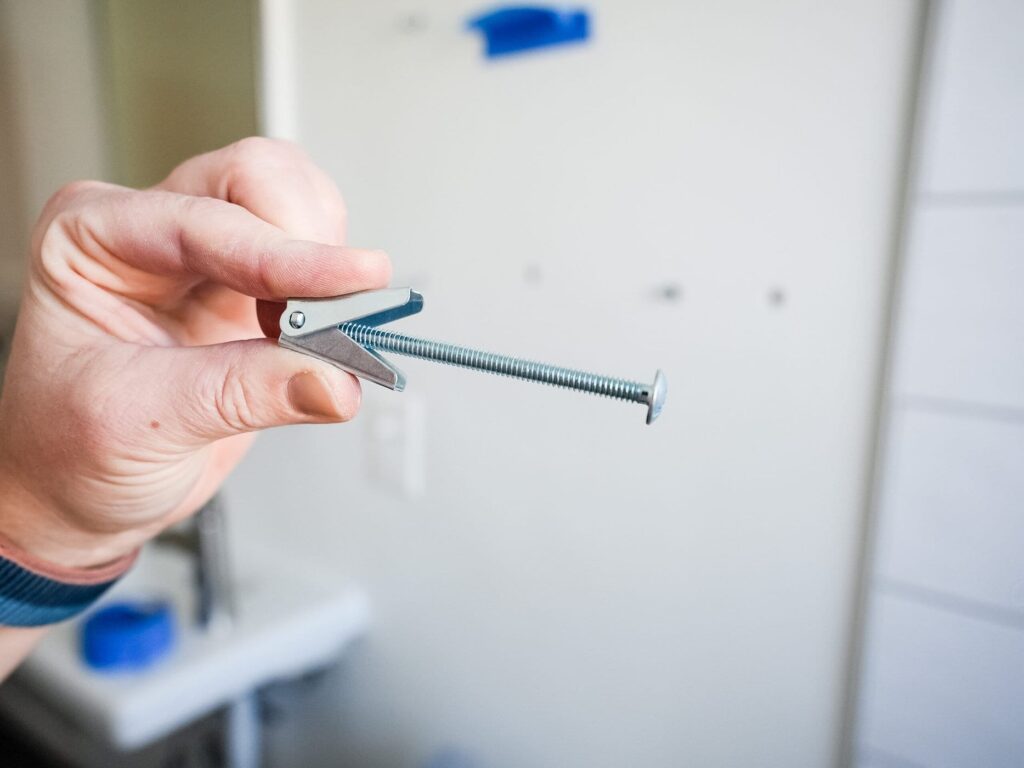Toggle bolts, also known as toggle anchors or butterfly anchors, are essential components in the world of construction, providing sturdy support for heavy items like shelves, cabinets, and mirrors. These versatile fasteners offer a robust solution for hanging objects on drywall, plaster, and other hollow materials where traditional screws and nails might not suffice. In this comprehensive guide, we’ll delve deep into the world of toggle bolts, exploring their types, applications, installation methods, and best practices.
Understanding Toggle Bolts
Toggle bolts are specialized fasteners designed to provide strong anchoring in hollow materials. They consist of two main parts: the toggle and the bolt. The toggle is typically a metal bar or strap with spring-loaded wings that fold inward for insertion into a pre-drilled hole. Once inside the wall, the wings spring open, creating a secure anchor point. The bolt, usually a machine screw, is then threaded into the toggle to hold the object in place.
Types of Toggle Bolts
Toggle bolts come in various sizes and designs to accommodate different weight capacities and installation requirements. Some common types include:
Standard Toggle Bolts: These are the most basic type, consisting of a spring-loaded toggle and a machine screw. They are suitable for medium-duty applications and are available in a range of sizes to accommodate different wall thicknesses.
Strap Toggle Bolts: Strap toggles feature a metal strap instead of wings, making them ideal for situations where a larger footprint is needed to distribute weight more evenly. They provide excellent support for heavier items and can be used in drywall, plaster, and even ceiling installations.
Snap Toggle Bolts: Snap toggles employ a unique design that allows for quick and easy installation. They consist of a spring-loaded toggle attached to a plastic strap. When the toggle is inserted into the wall, the strap snaps off, leaving the toggle in place for securing the object.
Cavity Wall Toggles: These toggles are specifically designed for use in hollow cavity walls where there is no solid material behind the surface. They feature long, threaded bolts that extend deep into the wall cavity, providing reliable support for heavy loads.
Applications of Toggle Bolts
Toggle bolts are incredibly versatile and can be used in a wide range of applications, including:
Hanging Shelves and Cabinets: Toggle bolts provide a sturdy anchor for mounting shelves, cabinets, and other storage units to walls.
Installing Mirrors and Artwork: Large mirrors and artwork can be securely hung using toggle bolts to prevent accidents and ensure stability.
Mounting TVs and Monitors: Toggle bolts are often used to mount televisions, computer monitors, and other electronic devices on walls without studs.
Securing Light Fixtures: Heavy light fixtures, such as chandeliers and pendant lights, can be safely attached to ceilings using toggle bolts.
Anchoring Furniture: Tall or heavy furniture pieces, such as bookcases and wardrobes, can be anchored to walls with toggle bolts to prevent tipping.
Installation Guidelines
Proper installation is crucial for ensuring the effectiveness and reliability of toggle bolts. Follow these guidelines for successful installation:
Choose the Right Size: Select toggle bolt’s that are appropriate for the weight of the object you are hanging and the thickness of the wall material.
Pre-Drill Holes: Use a drill bit that matches the diameter of the toggle bolt’s closed wings to create pilot holes in the wall. The hole should be deep enough to accommodate the entire toggle when folded.
Insert the Toggle: Fold the wings of the toggle and insert them into the pre-drilled hole. Once inside the wall, allow the wings to spring open and rest flush against the inner surface.
Secure the Bolt: Thread the machine screw into the toggle and tighten it until the object is securely attached to the wall. Be careful not to over-tighten, as this can damage the wall material or compromise the anchor.
Test Stability: After installation, gently test the stability of the object to ensure that it is securely anchored to the wall. Make any necessary adjustments to the bolt tension if needed.
Best Practices and Tips
To maximize the effectiveness of toggle bolt’s and ensure a successful installation, consider the following best practices:
Use Multiple Anchors: For heavy objects or items subject to frequent movement, use multiple toggle bolt’s spaced evenly apart to distribute the weight and provide added stability.
Check Wall Material: Before installing toggle bolt’s, verify that the wall material is suitable for anchoring. Avoid using toggle bolt’s in overly brittle or damaged walls, as they may not provide sufficient support.
Follow Weight Limits: Adhere to the weight limits specified by the manufacturer for each toggle bolt size and type. Overloading toggle bolt’s can lead to failure and potential damage to property or injury.
Inspect Regularly: Periodically inspect toggle bolt installations for signs of loosening or damage. Tighten any loose bolts immediately to prevent accidents or injuries.
Conclusion
Toggle bolts are indispensable tools for securely hanging objects on hollow walls and surfaces where traditional fasteners may not be sufficient. By understanding the different types of toggle bolts, their applications, and proper installation techniques, you can ensure reliable and long-lasting support for a variety of items in your home or workplace. Whether you’re hanging shelves, mounting TVs, or securing light fixtures, toggle bolt’s offer a robust solution for your anchoring needs.







